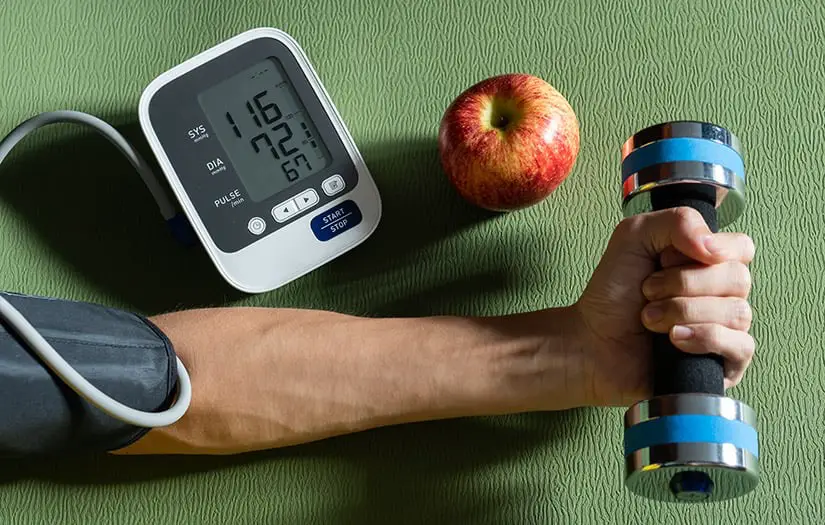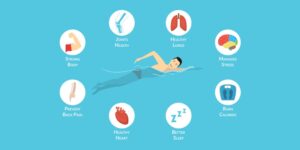Beware: Exercise May Be Triggering Dangerous Blood Pressure Spikes

Exercise May Spike Blood Pressure: Understanding the Link

Regular physical activity is one of the most important factors for maintaining good health. It helps keep your heart strong, supports weight management, and reduces the risk of chronic diseases. However, for some people, exercise can cause a temporary spike in blood pressure (BP). While this increase is usually short-lived and not a cause for concern in most cases, it’s important to understand why it happens, how it affects the body, and how to manage it for optimal health.
In this article, we’ll explore how exercise can cause an increase in blood pressure, why this happens, the potential risks, and how to exercise safely, especially for people who have hypertension or other cardiovascular conditions.
What Happens to Blood Pressure During Exercise?
When you engage in physical activity, your muscles require more oxygen and nutrients to perform. To meet this demand, your heart pumps more blood, causing your heart rate to increase. At the same time, your blood vessels dilate (widen) to allow blood to flow more freely to the muscles.
During intense exercise, your systolic blood pressure (the top number in a blood pressure reading) can temporarily rise significantly. This happens because the heart is working harder to pump blood throughout the body. The diastolic blood pressure (the bottom number) typically stays the same or may even slightly decrease.
This temporary increase in blood pressure is a natural response to exercise. After the exercise ends, blood pressure usually returns to normal levels as the heart rate slows down and blood flow stabilizes.
Why Does Exercise Cause a Spike in Blood Pressure?
The body’s cardiovascular system is designed to respond to physical activity by adjusting blood flow to meet the increased demand. Here’s how exercise leads to a spike in blood pressure:
- Increased Heart Rate: When you exercise, your heart rate increases to supply more oxygen and nutrients to your muscles. The faster the heart beats, the greater the pressure on the walls of the arteries, which leads to a rise in blood pressure.
- Vasoconstriction: During intense exercise, certain blood vessels constrict (narrow) while others dilate (widen). This is a normal response that helps direct blood to the muscles that are working the hardest. The narrowing of some blood vessels can increase pressure temporarily.
- Intensity of Exercise: The more intense the workout, the greater the demand on the heart and the circulatory system. High-intensity activities like running, weightlifting, or sprinting cause a more significant spike in blood pressure compared to moderate exercises such as walking or cycling.
- Stress Response: Exercise, especially intense exercise, can trigger the body’s “fight or flight” response. This response releases hormones like adrenaline, which increase heart rate and blood pressure.
Is the Increase in Blood Pressure Dangerous?
For most people, the increase in blood pressure during exercise is not dangerous. In fact, regular exercise is one of the most effective ways to reduce high blood pressure over the long term. Physical activity helps improve heart health by strengthening the heart, reducing arterial stiffness, and improving blood flow.
However, for some individuals, especially those with pre-existing hypertension (high blood pressure), the temporary rise in blood pressure during exercise can be a concern. This is particularly true if the person is engaging in very intense activities or not taking the necessary precautions.
Who is at Risk of Exercise-Induced High Blood Pressure?
Certain groups of people may be more prone to experiencing significant spikes in blood pressure during exercise:
- People with Hypertension: If you have high blood pressure, exercise can temporarily increase your systolic blood pressure to higher levels than what is typical for a healthy individual. In such cases, it is essential to monitor BP levels before, during, and after exercise.
- People with Heart Disease: Those with heart conditions should be cautious when engaging in strenuous activities, as an intense rise in blood pressure can put additional strain on the heart.
- Older Adults: As people age, their blood vessels become stiffer, which can cause blood pressure to rise more during exercise. It’s important for older adults to consult with their healthcare provider before starting a new exercise routine.
- Unfit Individuals: If you are not used to exercising, your body may not be accustomed to the physical strain, causing a more significant rise in blood pressure. Gradually increasing exercise intensity can help the body adapt over time.
- People with Overweight or Obesity: Being overweight can increase the strain on the cardiovascular system, leading to higher blood pressure during physical activity.
How Exercise Can Help Lower Blood Pressure Long-Term
Although exercise may cause a temporary spike in blood pressure, the long-term effects of regular physical activity are overwhelmingly beneficial for controlling high blood pressure. Here’s how exercise helps:
- Strengthening the Heart: Regular exercise helps strengthen the heart muscle, allowing it to pump blood more efficiently. A stronger heart pumps with less effort, reducing the pressure on the arteries.
- Improving Blood Vessel Function: Exercise improves the elasticity of blood vessels, making it easier for them to expand and contract as needed. This leads to better blood flow and lower overall blood pressure.
- Weight Loss: Exercise helps with weight management. Losing weight reduces the strain on the heart and blood vessels, contributing to lower blood pressure.
- Stress Reduction: Physical activity helps reduce stress, which can be a major contributor to high blood pressure. Regular exercise releases endorphins, which promote a sense of well-being and relaxation.
- Improved Circulation: Regular physical activity enhances circulation, ensuring that blood flows smoothly through the body, reducing the likelihood of high blood pressure.
How to Exercise Safely with High Blood Pressure
If you have high blood pressure or are concerned about how exercise might affect your BP, there are several steps you can take to exercise safely and minimize risks:
- Consult Your Doctor: Before starting any exercise program, especially if you have hypertension or other heart conditions, it’s important to get clearance from your healthcare provider. They may recommend certain types of exercise or precautions.
- Start Slowly: If you’re new to exercise or haven’t been active for a while, begin with low-impact activities such as walking, swimming, or cycling. Gradually increase the intensity and duration of your workouts over time.
- Focus on Aerobic Exercises: Aerobic exercises, such as brisk walking, swimming, or cycling, are excellent for improving cardiovascular health and managing blood pressure. These activities help strengthen the heart without putting too much strain on the body.
- Avoid Intense, High-Impact Workouts: Intense activities like weightlifting, sprinting, or HIIT (High-Intensity Interval Training) can cause a significant spike in blood pressure. If you enjoy strength training, use lighter weights with more repetitions and avoid holding your breath during lifts.
- Monitor Your Blood Pressure: If you have high blood pressure, it’s a good idea to monitor your blood pressure regularly, both before and after exercise. This will help you understand how your body responds to different types of physical activity.
- Stay Hydrated: Dehydration can make blood pressure spikes worse, so it’s important to drink plenty of water before, during, and after your workout.
- Listen to Your Body: Pay attention to how you feel during exercise. If you experience dizziness, shortness of breath, chest pain, or any other unusual symptoms, stop immediately and consult a doctor.
Conclusion: Exercise and Blood Pressure
Exercise is an essential part of a healthy lifestyle and can significantly help manage and prevent high blood pressure in the long run. While it’s true that physical activity may cause a temporary spike in blood pressure, this effect is usually harmless for most people, especially those without pre-existing hypertension.
The key is to exercise in moderation, start slowly, and gradually build intensity. If you have hypertension or any heart-related conditions, always consult your doctor before beginning any exercise routine. With the right approach, exercise can be a powerful tool for improving heart health, managing blood pressure, and enhancing your overall well-being.




